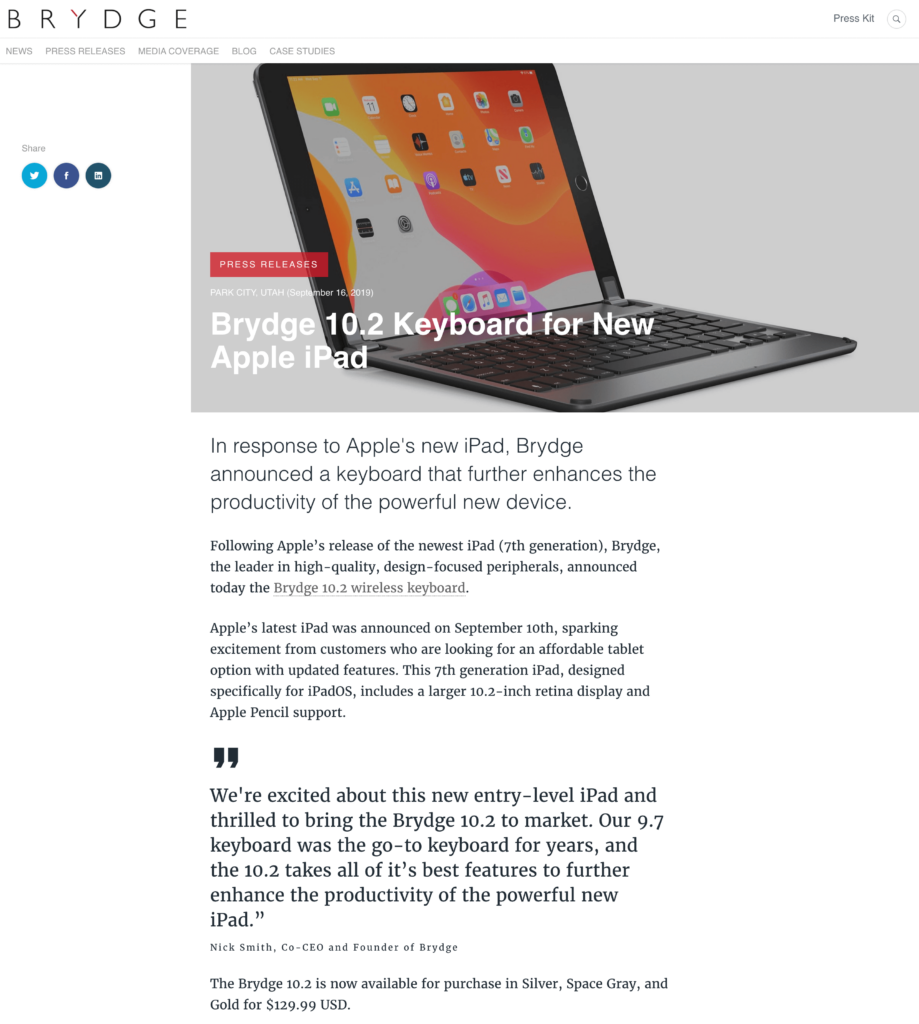Trying to figure out what’s the perfect press release length? You came to the right place:
- How long should a press release be?
- Put the most important information first
- Leave room for an invitation at the end
How long should a press release be?
Following a few basic guidelines will help you to get great results from your press releases. One of the more overlooked tips relates to a simple aspect of every press release—its length.
The best length of a press release is a common question with a fairly straightforward answer. Despite having a simple answer, however, there are still some details you should keep in mind to construct your press release in a way that gets your message out in an efficient way and contains all the news you want to communicate.
Let’s get to the bottom line first and work backward.
A press release should have somewhere in the neighborhood of 400 words. That’s roughly one printed page. There’s no crime in falling a little short or going over by a bit but if you have significantly fewer or more than that amount of words, something is wrong.
Staying in the middle ground is key to getting your point across while still holding the attention of the reader. Let’s look at a few guidelines that will help you to write an effective press release that is just the right length.
Put the most important information first
When writing a press release, always be clear about its purpose. This will help when trying to get the press release length right. The point is to announce important company news to journalists in a way that will encourage them to consider it relevant to what they do. In the age of the internet, you have just a small window of opportunity to make your case, so get straight to the “who-what-when-where-why” facts.
Lead with the big news, the main point or key takeaway from the press release. This is not the time or place for extensive background information or context. Don’t keep anyone in suspense in a press release.

When describing the main content of your press release, there’s always a temptation to squeeze in one more sentence, adjective or buzzword. Be careful when you feel this temptation, though. Always be sure that whatever you want to add is not included at the expense of something more useful.
Try to look at it from the perspective of the person reading it, the person you want to convince that what you are sharing is interesting enough to pick up the phone or write an email to learn more. They want to know the basics before they decide if they want to read on or not. If the length of the press release goes beyond what is needed, you might not get the response you want.
What happened?
Why should you care?
What does this mean for the industry, business or community we have in common?
How can you learn more if you want to?
These are the questions you need to answer as directly as possible.
Once you’ve addressed these questions with the content of your press release, you’re done. Sure, you can add some relevant details if there’s space and, yes, you can fill it out a bit with those descriptive adjectives and buzzwords if you have to. But there is always a balance to strike and sensing where it is can be more art than science.
Using Prowly’s Press Release Creator can simplify the process by giving you the tools you need to use graphics and other media to communicate your message quickly and effectively. In fact, pictures in a press release can often work better and faster than additional text.

Attention is a valuable commodity—respect the time given to your press release by sticking to a fairly narrow path. If your press release length is more than one printed page, it’s time to go back and look for something to cut out or condense.
Leave room for an invitation at the end
Moving to the end of the press release, always allow space for your standard, default text that appears in the closing of all of your announcements. This can be just a sentence with a reminder about who you are, what you do, your position as a leader in your industry, etc.
It’s also where you should include a link to your Public Relations or Marketing representative to make it easier for journalists to get in touch. Alternatively, you could also link to an online press room.
If the main subject of your press release truly needs more space to fully explain it, you may want to consider writing a blog or creating a landing page and adding a link to it.
Adding a simple “To learn more about X, click here” should be enough. Just make it clear that you’re making more detailed information available for anyone who’s interested. Journalists understand that some topics are extremely complex but they still want the executive summary before deciding if they want to take a deeper dive.
It doesn’t take much to use up your 400 words in a press release (you’ve already read 700 here on this page). Right from the start, be sure to cut the fat and keep your press release lean and focused on the facts that matter most to journalists and why they should be interested in you.
The time for long, detailed explanations and the history behwind your big announcement will have to wait—first, you need to quickly persuade readers that investing a little more time is worth it.
Ready to start persuading? Start now with a free trial from Prowly and get your message out to the world.

